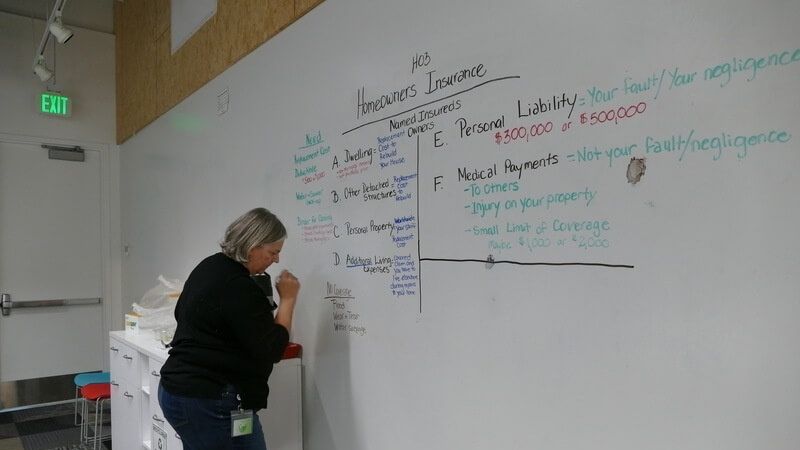Homeownership Month: A Guide to Homeowners Insurance
As part of National Homeownership Month, we're sharing educational resources for homebuyers and homeowners written by some of our closest partners....
4 min read
 Twin Cities Habitat for Humanity
:
8:43 AM on September 23, 2024
Twin Cities Habitat for Humanity
:
8:43 AM on September 23, 2024

Sometimes, despite our best efforts, life doesn’t turn out the way we planned. If a catastrophic event occurs to you, your loved ones might be left with mounting expenses, medical costs, and (if you’re a homeowner), a lingering mortgage.
Life insurance can relieve some of those financial burdens. It provides a safety net when you ultimately pass away. Purchasing a life insurance plan demonstrates a commitment to protecting your family’s financial well-being.
Payments from a life insurance plan can cover expenses like:
Navigating the life insurance market can be confusing. You might already have some coverage from your employer, but it may not be enough to cover all your family’s expenses. This post covers the basics of life insurance: types, coverages, riders, and best applications.
And here’s a primer on insurance based on a recent episode of the Welcome Home Podcast from the Minnesota Homeownership Center.
At the broadest level, life insurance policies come in two primary forms: term and whole life. The main difference is when the policy ends:

Term and whole life are the primary types of life insurance, but other variations might work in certain situations:
Choosing a life insurance policy type is just the first step. The next question is determining how much coverage you’ll need. The goal is to provide enough coverage to meet current and future needs for your family.
Financial experts recommend taking out policies to cover 10-15 times your annual income.
Keep in mind that you may already have an existing life insurance policy through your employer. Standard employer-sponsored policies offer coverage up to your annual salary, and you can increase those coverage amounts with additional pre-tax payroll deductions.
Many life insurance policies offer riders, which are optional add-ons that help you customize your policy's coverage. These riders typically increase your policy premium, but they might help in specific scenarios. Some common policy riders include:
Each insurer offers different riders depending on policy type, so check with your insurance agent on applicable riders when shopping for a policy.
By nature, life insurance is a delayed benefit. You hope to never need the benefit (unless you have a whole policy), but it can help keep your family financially secure. Financial coaches encourage people to purchase life insurance policies when they’re young and healthy, rather than waiting to pay higher premiums when older.
Whenever you choose to take out life insurance, you’re adding a financial safety net and securing your family’s well-being for years. If you want to learn more about life insurance policies, connect with some of our financial services partners for further guidance.
Your gift unlocks bright futures! Donate now to create, preserve, and promote affordable homeownership in the Twin Cities.
-2.jpg)
As part of National Homeownership Month, we're sharing educational resources for homebuyers and homeowners written by some of our closest partners....

Guest blog by Debbie Campbell, Insurance Educator I’ve been a Twin Cities Habitat volunteer for a couple decades starting with participating in Women...

If you’re considering buying a home, it might be time to understand a mortgage. Taking on a mortgage can be intimidating, but you’ll be better...